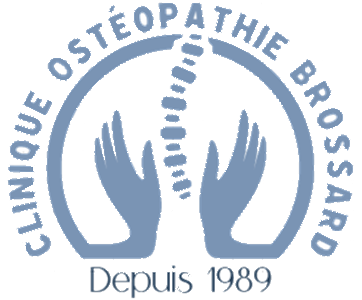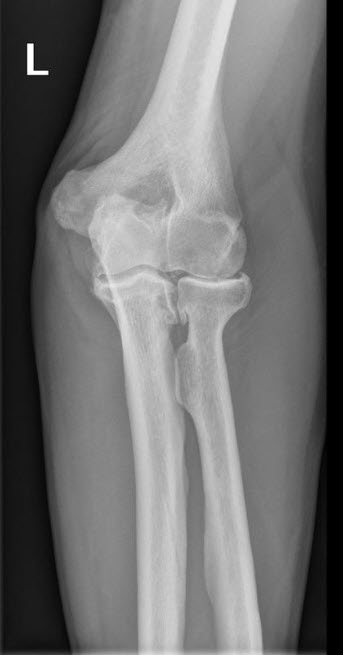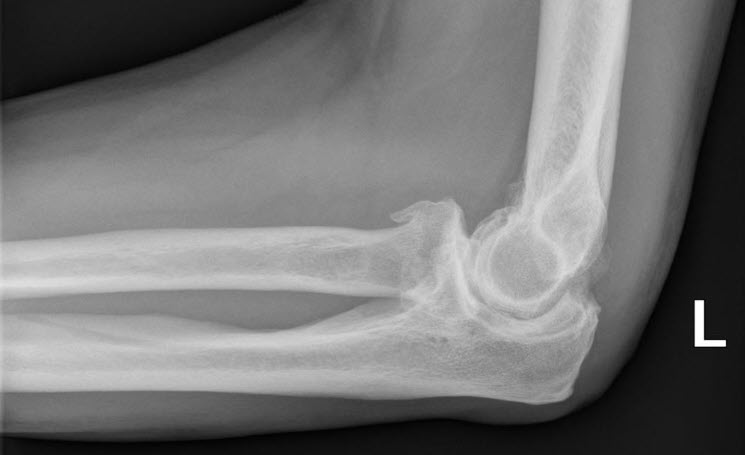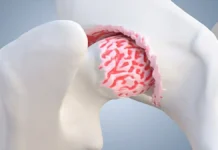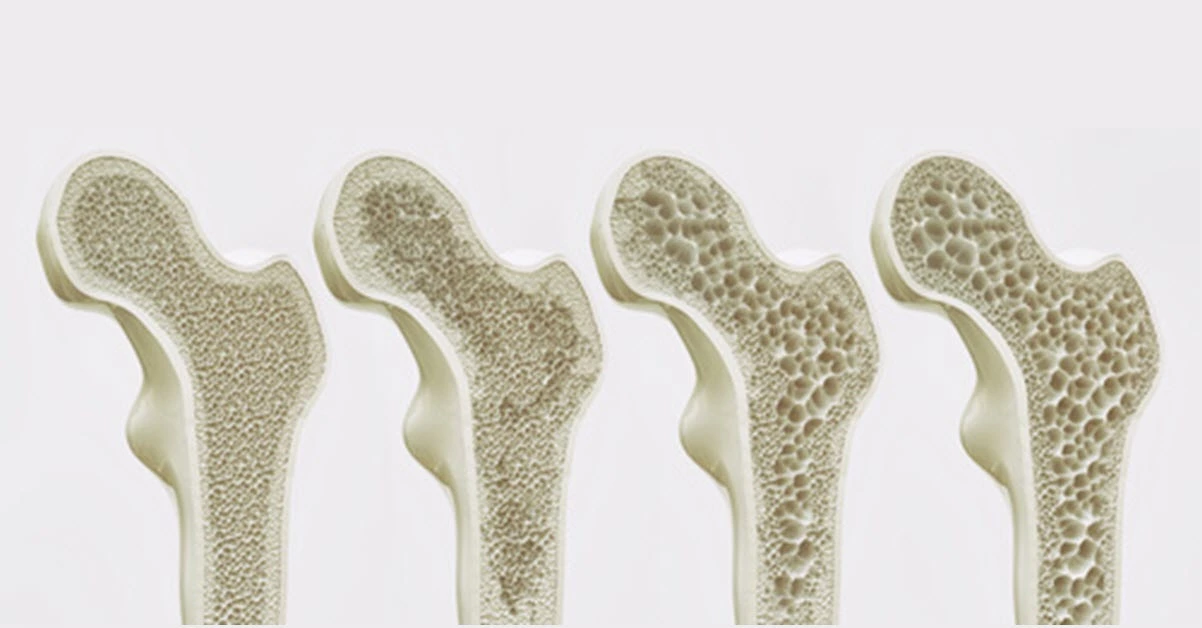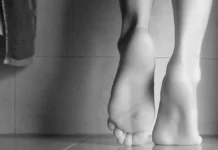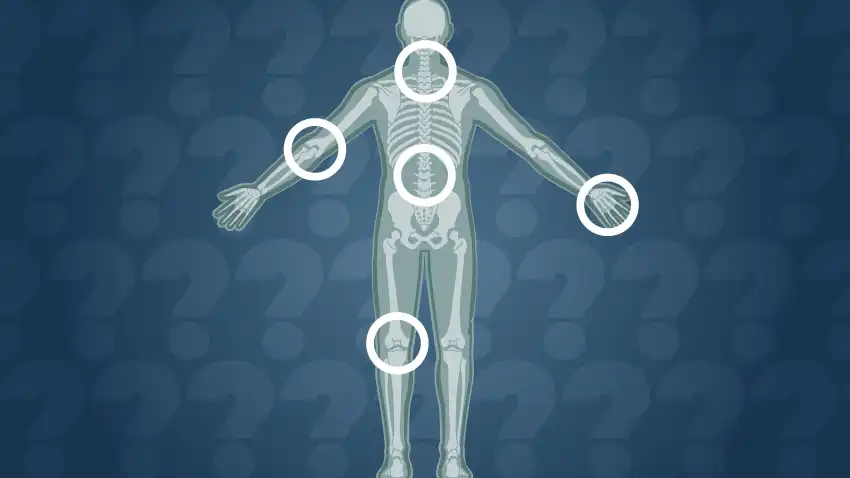Introduction to Elbow Osteoarthritis
Overview of Osteoarthritis in Upper Limb Joints
Osteoarthritis (OA) is the most common joint disorder, characterized by progressive degeneration of articular cartilage, joint space narrowing, and the formation of osteophytes. While the knee and hip joints are most frequently affected, osteoarthritis can also occur in upper limb joints, including the elbow. Although elbow osteoarthritis is less common than OA in the lower limbs, it can be debilitating, particularly for individuals who engage in activities requiring repetitive arm movements or heavy manual labor.
Osteoarthritis of the elbow typically results from either primary degeneration (age-related wear and tear) or secondary causes such as trauma, inflammatory diseases, or repetitive stress. Unlike weight-bearing joints, the elbow is subjected to both mechanical stress and a range of motions, making it vulnerable to damage despite its relatively lower incidence of osteoarthritis compared to other joints.
Elbow osteoarthritis is commonly under-recognized until the later stages of the disease. This delay in diagnosis is partly due to the elbow’s complex anatomy, which can obscure symptoms in the early stages. A deeper understanding of elbow joint anatomy is essential for recognizing the underlying mechanisms of osteoarthritis in this joint.
Anatomical Structure and Function of the Elbow Joint
The elbow is a complex hinge joint that connects the humerus (upper arm bone) with the radius and ulna (forearm bones). It allows two key movements: flexion-extension (bending and straightening of the arm) and pronation-supination (rotation of the forearm). The joint consists of three articulations: the humeroulnar joint, humeroradial joint, and proximal radioulnar joint, all enclosed within a single capsule. The articular cartilage in the elbow, like in other synovial joints, plays a critical role in smooth joint movement and shock absorption.
The elbow’s stability is maintained by several ligaments, including the ulnar collateral ligament, radial collateral ligament, and annular ligament. Muscles crossing the elbow joint, such as the biceps brachii, brachialis, and triceps, contribute to movement and provide additional stability.
Osteoarthritis of the elbow affects the cartilage lining these articulations. As the cartilage wears away, bones can rub against each other, causing pain, stiffness, and a loss of joint mobility. The formation of osteophytes, or bone spurs, is a hallmark of osteoarthritis, often seen on imaging in advanced cases. These bony projections can further limit motion and contribute to a reduction in joint space.
In contrast to the hip and knee, where OA is primarily driven by age-related wear, elbow OA is often secondary to traumatic injuries, such as fractures or dislocations, or due to conditions that cause joint inflammation, like rheumatoid arthritis. People in professions that involve heavy use of the arms—such as mechanics, athletes, or construction workers—are also at a higher risk of developing osteoarthritis in this joint.
Impact on Daily Life
The elbow joint’s pivotal role in upper limb function means that osteoarthritis can significantly impair daily activities. Patients may experience difficulty performing tasks that require repetitive use of the arms, such as lifting, carrying, or pushing objects. Even basic activities like eating or personal hygiene can become challenging in advanced cases, diminishing the patient’s quality of life.
For many, the development of osteoarthritis in the elbow leads to chronic pain, joint deformity, and reduced range of motion, all of which can impact work capacity, recreational activities, and overall independence. The impact of elbow osteoarthritis is particularly profound in active individuals or those who depend on their upper limbs for occupational tasks, highlighting the importance of early recognition and treatment.
Pathophysiology and Etiology
Degenerative Changes in the Elbow Joint
Osteoarthritis (OA) of the elbow follows a similar degenerative process as OA in other joints but is influenced by unique anatomical and biomechanical factors. The primary feature of osteoarthritis is the gradual breakdown of articular cartilage, which serves as a cushion between bones. In the elbow, the articular cartilage covers the humerus, radius, and ulna within the joint, ensuring smooth movement and shock absorption during flexion, extension, and rotational motions.
The degeneration of cartilage begins at the molecular level, where the balance between catabolic and anabolic processes in cartilage tissue is disrupted. This imbalance leads to the breakdown of cartilage matrix components, such as collagen and proteoglycans. As these essential components degrade, the cartilage loses its ability to withstand mechanical stress, ultimately leading to erosion.
In the early stages of elbow osteoarthritis, cartilage loss may be minimal, but as the disease progresses, the cartilage thins and fissures, exposing the underlying bone. The exposed bone reacts by increasing its density (subchondral sclerosis), which can worsen joint pain and lead to the formation of osteophytes, or bone spurs. These osteophytes can further limit the elbow’s range of motion and contribute to joint stiffness, as they physically obstruct normal joint movement.
Synovial inflammation often accompanies osteoarthritis, though it tends to be less pronounced than in inflammatory arthritides like rheumatoid arthritis. The synovium, or lining of the joint, may produce excess synovial fluid in response to cartilage degradation, leading to joint effusion (swelling) and pain. Over time, the combination of cartilage erosion, osteophyte formation, and synovial inflammation leads to a cycle of pain, joint stiffness, and restricted movement.
Primary vs. Secondary Osteoarthritis
Elbow osteoarthritis is generally classified as either primary or secondary. Primary osteoarthritis is idiopathic, meaning it arises without a clear, identifiable cause, and is typically associated with the aging process. In primary elbow OA, gradual wear and tear from daily use leads to the breakdown of cartilage over time. This form of osteoarthritis is rare in the elbow compared to weight-bearing joints like the knee and hip, where the repetitive stresses of walking or standing drive the degenerative process.
Secondary osteoarthritis, on the other hand, is more common in the elbow. It is usually the result of a prior injury or other underlying condition. For example, a traumatic event like a fracture, dislocation, or ligament rupture can damage the joint surfaces, setting the stage for early cartilage wear and eventual osteoarthritis. In cases of trauma-induced osteoarthritis, joint alignment may be disrupted, or the cartilage surface may become uneven, leading to abnormal wear patterns and accelerated degeneration.
Secondary OA can also develop due to chronic overuse, particularly in individuals whose work or recreational activities place significant stress on the elbow joint. Athletes, such as baseball pitchers or tennis players, as well as manual laborers who perform repetitive tasks, may be at increased risk. Additionally, underlying conditions such as rheumatoid arthritis or gout can predispose the elbow joint to osteoarthritis by causing chronic inflammation or crystal deposition that damages cartilage and other joint structures.
Contributing Factors: Trauma, Overuse, and Systemic Conditions
Several factors contribute to the development of elbow osteoarthritis, with trauma and overuse being among the most significant. Traumatic injuries, such as fractures or dislocations, often damage the joint’s cartilage directly or cause subtle alterations in joint mechanics that lead to uneven stress distribution. Over time, even slight changes in how the joint bears weight or moves can increase wear and tear on the cartilage, ultimately leading to osteoarthritis.
Repetitive overuse is another critical contributor, particularly in individuals who perform frequent and forceful elbow movements. Athletes involved in sports that require repeated arm motions (e.g., throwing or racquet sports) and workers who engage in heavy manual labor are at heightened risk. Overuse places excess strain on the joint, leading to micro-injuries in the cartilage, ligaments, and surrounding tissues. These repetitive micro-traumas accumulate over time, eventually resulting in cartilage breakdown.
Systemic conditions, such as rheumatoid arthritis, psoriatic arthritis, or gout, can also predispose individuals to secondary osteoarthritis of the elbow. These inflammatory conditions affect the synovial lining, leading to chronic inflammation and the release of enzymes that degrade cartilage. In gout, urate crystals can deposit within the joint, further damaging the cartilage and contributing to OA development.
Finally, certain genetic factors may predispose individuals to osteoarthritis. Variations in genes related to cartilage production, collagen synthesis, and inflammatory pathways can make some people more susceptible to cartilage degeneration and OA.
Clinical Presentation and Symptoms
Progressive Joint Pain and Functional Limitation
Elbow osteoarthritis typically presents with a range of symptoms that worsen over time, reflecting the gradual degeneration of the joint. Pain is often the first and most common symptom, and it tends to develop insidiously, gradually increasing in intensity as the disease progresses. The pain is often deep, localized to the joint, and can be exacerbated by movement, particularly after periods of extended use. For many patients, activities such as lifting, carrying, or repetitive tasks involving the arm and elbow will trigger or intensify pain.
In the early stages of osteoarthritis, the pain may be intermittent and associated primarily with vigorous activity. However, as the disease advances, pain can become more persistent, even during periods of rest. In severe cases, patients may experience pain at night, interfering with sleep and contributing to fatigue and reduced quality of life. This chronic pain is caused by multiple factors, including cartilage loss, bone rubbing against bone, and the presence of osteophytes.
Functional limitations also emerge as the disease progresses. Patients may notice difficulty in performing routine activities that require the use of the arm and elbow, such as lifting objects, pushing, pulling, or even personal care tasks like dressing. The loss of elbow mobility often restricts the full range of motion, making it hard to fully extend or flex the arm. Over time, this decreased function can significantly affect a person’s ability to work, engage in recreational activities, or maintain independence.
Stiffness, Crepitus, and Loss of Range of Motion
As osteoarthritis progresses, stiffness in the elbow joint becomes more pronounced. This stiffness is usually most noticeable after periods of inactivity, such as upon waking in the morning or after sitting for extended periods. Morning stiffness can last for several minutes to hours and may gradually improve with movement. However, in advanced cases, stiffness can persist throughout the day, limiting mobility and the ability to perform routine tasks.
Another hallmark of elbow osteoarthritis is crepitus, a sensation or sound of grinding, clicking, or crackling in the joint during movement. Crepitus occurs due to the roughened surfaces of the bones coming into contact with each other as the cartilage erodes. This phenomenon is particularly common in patients with moderate to advanced stages of the disease, and it often accompanies joint stiffness. The presence of crepitus is not only a clinical sign of cartilage damage but can also be distressing for patients, especially when accompanied by pain.
The loss of range of motion is a critical indicator of elbow osteoarthritis. In the early stages, patients may only experience mild limitations, but as the disease advances, the range of movement becomes increasingly restricted. Typically, both flexion (bending) and extension (straightening) are impaired. In some cases, patients may be unable to fully extend their arms, leading to a visible deformity and functional impairment. Rotation of the forearm, including pronation (turning the palm down) and supination (turning the palm up), can also be affected in more severe cases, further limiting daily activities such as turning a doorknob or using utensils.
Differentiating Elbow Osteoarthritis from Other Conditions
Elbow osteoarthritis shares several symptoms with other joint diseases, which can complicate diagnosis. Conditions like rheumatoid arthritis (RA), gout, psoriatic arthritis, and lateral epicondylitis (tennis elbow) can present with similar features, such as pain, stiffness, and swelling. Therefore, distinguishing osteoarthritis from these other conditions is essential for proper treatment and management.
- Rheumatoid Arthritis (RA): RA is a systemic inflammatory disease that affects the synovial lining of joints, leading to pain, swelling, and eventual joint destruction. Unlike osteoarthritis, which is typically unilateral or limited to one or two joints, RA often presents with symmetrical joint involvement, including the small joints of the hands and wrists in addition to the elbow. RA also tends to cause prolonged morning stiffness lasting more than an hour, and it may be accompanied by systemic symptoms like fatigue and fever.
- Gout: Gout is characterized by the deposition of urate crystals in the joints, leading to sudden and severe episodes of pain, redness, and swelling. While gout can affect the elbow, it most commonly presents in the big toe and is marked by intermittent flares, unlike the more chronic and gradual progression of pain seen in osteoarthritis.
- Psoriatic Arthritis: Patients with psoriasis may develop psoriatic arthritis, which can affect the elbow and other joints. This form of arthritis is inflammatory in nature and, like RA, may involve multiple joints and be accompanied by systemic symptoms. Psoriatic arthritis can also present with dactylitis (sausage-like swelling of the fingers or toes) and enthesitis (inflammation of the tendons where they attach to bone), which are not seen in osteoarthritis.
- Lateral Epicondylitis (Tennis Elbow): Lateral epicondylitis involves inflammation of the tendons on the outer part of the elbow and is usually related to overuse. While both conditions cause elbow pain, tennis elbow primarily affects the tendons, not the joint itself, and the pain is often localized to the outer elbow and worsens with gripping or lifting. In contrast, osteoarthritis affects the entire joint and presents with more generalized pain, stiffness, and crepitus.
Accurate diagnosis of elbow osteoarthritis typically involves a thorough clinical examination, patient history, and imaging studies such as X-rays or MRIs to assess the extent of cartilage loss and bone changes.
Diagnostic Approaches
Clinical Evaluation: History and Physical Examination
The diagnosis of elbow osteoarthritis (OA) begins with a thorough clinical evaluation, starting with a detailed patient history. Patients often report chronic pain in the elbow, which is typically progressive and exacerbated by activity. The pain may be accompanied by stiffness, a decreased range of motion, and a sensation of grinding or clicking (crepitus) during movement. A careful inquiry into the patient’s occupational and recreational activities is important, as repetitive use of the elbow or a history of trauma may be significant contributors to the development of OA. Prior injuries such as fractures, dislocations, or ligament tears are also relevant, as they can predispose the joint to secondary osteoarthritis.
During the physical examination, the physician will assess for tenderness, swelling, and visible deformities around the elbow joint. Tenderness is often found over the lateral and medial aspects of the elbow, and crepitus may be palpable when the joint is moved through its range of motion. Reduced range of motion is a common finding, especially in more advanced cases. The elbow may have difficulty fully extending or flexing, and rotational movements like pronation (turning the palm downward) and supination (turning the palm upward) may also be limited. The presence of osteophytes, or bone spurs, may contribute to mechanical obstruction of movement, and the joint capsule may feel thickened upon palpation.
In some cases, joint effusion (fluid accumulation) can be present, though this is less common in osteoarthritis than in inflammatory conditions like rheumatoid arthritis. When effusion is present, it may indicate synovitis (inflammation of the joint lining), which can contribute to pain and stiffness. The physician may also check for signs of instability in the elbow, particularly in cases where trauma has damaged ligaments or the joint capsule.
Imaging Techniques: Radiographs, MRI, and Ultrasound
Once clinical suspicion for elbow osteoarthritis is established, imaging studies are used to confirm the diagnosis and assess the severity of the disease. Plain radiographs (X-rays) are the most common imaging modality used in the evaluation of osteoarthritis and can reveal characteristic changes such as joint space narrowing, osteophyte formation, subchondral sclerosis (increased bone density under the cartilage), and, in more advanced cases, subchondral cysts. These findings are typical of osteoarthritis and help differentiate it from other joint diseases.
Radiographs are particularly useful in grading the severity of osteoarthritis. The Kellgren-Lawrence grading system is commonly employed to classify the degree of joint degeneration based on the presence of osteophytes, joint space narrowing, and subchondral changes. Early-stage osteoarthritis may show minimal changes, such as small osteophytes, while advanced cases may exhibit severe joint space narrowing and large osteophytes that can significantly restrict movement.
Magnetic Resonance Imaging (MRI) provides a more detailed view of the soft tissues within the elbow joint, including cartilage, ligaments, and the synovial membrane. MRI is especially useful in early-stage osteoarthritis when X-ray findings may be subtle or absent. MRI can detect early cartilage loss, bone marrow edema, and synovial thickening, all of which may contribute to the patient’s symptoms. Additionally, MRI can help rule out other conditions that may mimic osteoarthritis, such as ligament injuries, avascular necrosis, or inflammatory arthritis.
In cases where MRI is contraindicated or unavailable, ultrasound may be used as an adjunct imaging modality. Ultrasound is a non-invasive, cost-effective tool that allows real-time evaluation of joint structures. It is particularly useful for assessing synovial effusion, synovitis, and osteophytes. While it does not provide as detailed an image of cartilage as MRI, ultrasound can still be helpful in diagnosing osteoarthritis, especially when performed by an experienced clinician.
Role of Biomarkers in Early Detection
While imaging remains the cornerstone of osteoarthritis diagnosis, researchers are increasingly investigating the role of biomarkers in the early detection and monitoring of osteoarthritis. Biomarkers are substances found in blood, urine, or synovial fluid that reflect biological processes occurring in the joint, such as cartilage breakdown, bone remodeling, or inflammation. Identifying reliable biomarkers could potentially allow for earlier diagnosis of osteoarthritis, even before significant structural damage is visible on imaging.
One promising area of research involves cartilage breakdown products such as C-telopeptide of type II collagen (CTX-II) and aggrecan fragments, which are released into the bloodstream as cartilage degrades. Elevated levels of these biomarkers may indicate early cartilage damage, even in patients with minimal symptoms or normal imaging findings. Other biomarkers, such as matrix metalloproteinases (MMPs) and tissue inhibitors of metalloproteinases (TIMPs), are being studied for their roles in cartilage and bone remodeling in osteoarthritis.
Additionally, inflammatory biomarkers like C-reactive protein (CRP) and interleukin-6 (IL-6), which are typically associated with inflammatory conditions such as rheumatoid arthritis, may also be elevated in some patients with osteoarthritis, particularly in those with synovitis or joint effusion. These biomarkers could help clinicians identify patients at higher risk of rapid disease progression.
However, while biomarker research is promising, it has not yet reached the point where routine biomarker testing is widely used in clinical practice for the diagnosis of osteoarthritis. Further research is needed to validate the use of these markers and to establish standardized thresholds for their interpretation.
Stages and Severity of Elbow Osteoarthritis
Grading Systems for Elbow Osteoarthritis
Osteoarthritis (OA) of the elbow progresses through distinct stages, with increasing severity of symptoms and joint degeneration. Understanding the stages of OA is crucial for determining the appropriate treatment strategy and for predicting patient outcomes. Various grading systems are used to classify the severity of osteoarthritis, with the Kellgren-Lawrence grading system being the most commonly used in clinical practice.
The Kellgren-Lawrence system evaluates joint damage based on radiographic findings such as osteophyte formation, joint space narrowing, and subchondral bone changes. It consists of five grades (0 to 4), ranging from no radiographic signs of osteoarthritis to severe joint degeneration:
- Grade 0: No radiographic evidence of osteoarthritis. The elbow joint appears normal, with no visible osteophytes or joint space narrowing. Patients at this stage may have no symptoms or may experience only minor discomfort or stiffness after heavy use.
- Grade 1 (Doubtful OA): Small osteophytes may begin to form, but joint space narrowing is not yet apparent. At this stage, patients may have mild or occasional pain, especially during activities involving repetitive elbow use, but radiographic changes are minimal.
- Grade 2 (Mild OA): Osteophytes are more prominent, and there may be slight joint space narrowing. Patients begin to experience more consistent symptoms, including joint stiffness, mild pain, and occasional crepitus (grinding or clicking during movement). Although pain is generally mild, it may start to interfere with daily activities or work-related tasks.
- Grade 3 (Moderate OA): Moderate joint space narrowing is evident, along with larger osteophytes and possible subchondral bone sclerosis. Symptoms become more pronounced, with increased pain during movement, decreased range of motion, and more frequent episodes of stiffness and crepitus. At this stage, patients may struggle with activities requiring full elbow extension or flexion, and pain may be present even at rest.
- Grade 4 (Severe OA): Severe joint space narrowing, large osteophytes, and marked subchondral sclerosis are present. The joint may also exhibit deformity. Patients with Grade 4 osteoarthritis experience constant pain, significant loss of function, and marked stiffness. Simple daily tasks like dressing, eating, or using tools may become difficult or impossible without assistance. Joint deformity and severe movement restrictions further impair functionality.
Early vs. Advanced Disease: Structural and Functional Changes
Elbow osteoarthritis progresses from early-stage disease, characterized by mild symptoms and minimal joint damage, to advanced disease, where significant structural changes and debilitating symptoms occur.
- Early-stage osteoarthritis primarily involves the breakdown of cartilage with minimal structural damage visible on imaging. At this point, patients may notice occasional stiffness or discomfort during or after activities that involve extensive use of the arm, such as lifting or repetitive motions. Functionality is largely preserved, but minor limitations may begin to emerge. The key feature of early-stage disease is intermittent pain and subtle stiffness that improves with rest or over-the-counter pain relief.
Structurally, early-stage OA may show small osteophytes and slight cartilage thinning, but the joint space typically remains intact. This phase is often asymptomatic or presents with mild, nonspecific symptoms, making it challenging to diagnose without advanced imaging like MRI, which can detect early cartilage loss and bone marrow changes that are not visible on X-rays.
- Moderate-stage osteoarthritis marks the transition from intermittent to more persistent symptoms. As cartilage erosion progresses, the joint space narrows, and osteophytes grow larger. The loss of cartilage leads to increased friction between the bones, causing pain, swelling, and reduced range of motion. The elbow may begin to lose flexibility, particularly in extension, and patients may notice a grinding sensation (crepitus) when moving the joint. The presence of osteophytes and joint space narrowing are visible on standard X-rays, and MRI may reveal cartilage defects and subchondral bone changes. In this stage, non-invasive treatments such as physical therapy, medications, and injections can help manage symptoms and slow disease progression.
- Advanced-stage osteoarthritis is characterized by severe degeneration of the elbow joint. The cartilage is almost entirely worn away, leaving the bones exposed and rubbing against each other. Osteophytes can be large enough to visibly deform the joint, and joint space may be significantly reduced or completely obliterated. Pain is constant and may occur even at rest or during sleep, severely impacting the patient’s quality of life. Functional limitations are extreme, with significant difficulty in performing even basic daily activities. The elbow may appear visibly swollen or deformed, and the range of motion is drastically reduced.
Advanced imaging techniques like MRI or CT scans can show extensive cartilage loss, subchondral cyst formation, and bone remodeling. At this stage, surgical intervention, such as arthroplasty (joint replacement), may be necessary to restore function and relieve pain.
Implications for Treatment and Prognosis
The treatment of elbow osteoarthritis is closely tied to its stage and severity. Early-stage OA is typically managed with conservative approaches, such as lifestyle modifications, physical therapy, and medications. These treatments aim to reduce pain, improve joint function, and slow the progression of the disease. Non-steroidal anti-inflammatory drugs (NSAIDs), intra-articular corticosteroid injections, and hyaluronic acid injections may be used to manage symptoms during this stage.
Moderate-stage OA often requires more intensive interventions, including advanced physical therapy, bracing, and joint injections. Patients may benefit from activity modifications to reduce stress on the elbow, while weight management and strengthening exercises help support the joint.
For advanced-stage OA, non-surgical treatments may no longer be effective, and surgical options become more prominent. Arthroscopic procedures to remove loose bodies, smooth damaged cartilage, or remove osteophytes can provide temporary relief, but total elbow arthroplasty (elbow replacement) may be necessary in cases of severe pain and functional loss. The prognosis for patients who undergo elbow replacement is generally favorable, although rehabilitation and recovery can be lengthy.
The earlier osteoarthritis is diagnosed and treated, the better the long-term outcome. Early intervention can prevent or delay the need for surgery and help maintain joint function and quality of life.
Treatment Options
Non-Surgical Treatments
When addressing elbow osteoarthritis (OA), the treatment approach typically begins with non-surgical methods aimed at relieving symptoms, improving function, and slowing the progression of joint damage. Non-surgical treatments can be particularly effective in the early to moderate stages of the disease.
- Medications:
The first line of treatment for elbow OA often involves medications to manage pain and inflammation. Over-the-counter analgesics like acetaminophen can help relieve mild pain, while non-steroidal anti-inflammatory drugs (NSAIDs) such as ibuprofen or naproxen may be used for both pain relief and reduction of inflammation. In cases where inflammation is more severe or systemic, prescription-strength NSAIDs or COX-2 inhibitors may be considered. However, long-term use of NSAIDs should be monitored due to potential gastrointestinal, cardiovascular, and renal side effects.For patients who cannot tolerate NSAIDs or in whom these medications are ineffective, topical analgesics, such as creams containing capsaicin or diclofenac, may provide localized relief without the systemic side effects of oral medications. - Physical Therapy:
Physical therapy plays a crucial role in managing elbow osteoarthritis. Therapy programs typically focus on improving the range of motion, strengthening the muscles that support the elbow joint, and reducing stiffness. Therapeutic exercises are designed to maintain joint flexibility, improve mobility, and strengthen surrounding muscles to offload stress from the damaged joint. A combination of stretching exercises to maintain joint range and strength-building exercises for the biceps, triceps, and forearm muscles is often recommended.In addition to exercises, manual therapy techniques, such as joint mobilization or soft tissue massage, can help alleviate pain and improve joint mechanics. In some cases, physical therapists may also recommend the use of supportive devices, such as elbow braces or wraps, to provide additional stability and reduce stress on the joint during activities. - Lifestyle Modifications:
Modifying activities that place excessive strain on the elbow can help alleviate symptoms and slow the progression of osteoarthritis. Patients who engage in repetitive motions, such as those involved in sports like tennis or manual labor jobs, may need to adjust their techniques or reduce the frequency of these activities. Occupational therapy may help patients modify their movements or work environment to protect the elbow joint from further damage.Weight management is also an essential aspect of lifestyle modification. Although the elbow is not a weight-bearing joint like the knee or hip, reducing overall body weight can decrease inflammation and stress on the musculoskeletal system as a whole. Engaging in regular low-impact physical activities like swimming or cycling can help maintain joint mobility and improve general fitness without exacerbating elbow pain. - Intra-articular Injections:
For patients whose symptoms are not adequately managed with medications and therapy, corticosteroid injections into the elbow joint can provide temporary relief from pain and inflammation. Corticosteroids are potent anti-inflammatory agents that reduce synovial inflammation, allowing for improved joint function and reduced pain. However, corticosteroid injections are not without risks, as repeated injections can weaken tendons and accelerate cartilage degeneration, so they are typically used sparingly.Hyaluronic acid injections, also known as viscosupplementation, are another option. Hyaluronic acid is a natural component of synovial fluid, which helps lubricate the joint and absorb shock. Injecting hyaluronic acid into the elbow joint can improve the viscosity of the synovial fluid, reducing friction and pain. Although commonly used in knee osteoarthritis, the efficacy of hyaluronic acid injections for elbow OA is still being studied, with mixed results.
Surgical Treatments
For patients with advanced elbow osteoarthritis or those who do not respond to non-surgical treatments, surgical intervention may become necessary. Surgical options vary depending on the severity of the disease, the patient’s age and activity level, and the specific structures involved.
- Arthroscopy:
Arthroscopic surgery is a minimally invasive procedure that can be used to treat early to moderate stages of elbow osteoarthritis. During arthroscopy, small incisions are made around the elbow, and a camera (arthroscope) is inserted into the joint to guide the surgeon. The surgeon can then remove loose bodies (fragments of bone or cartilage), smooth damaged cartilage, or remove osteophytes (bone spurs) that may be causing pain or limiting range of motion. Arthroscopy can be an effective way to manage symptoms, delay the need for more invasive surgery, and improve joint function.Arthroscopy is most effective when there is still some cartilage remaining in the joint and the osteoarthritis is not too advanced. Recovery times are generally shorter than those for open surgery, and patients typically regain mobility more quickly. However, the benefits of arthroscopy may only be temporary in patients with severe joint damage. - Elbow Replacement (Total Elbow Arthroplasty):
In cases of advanced osteoarthritis where the joint is severely damaged and non-surgical treatments have failed, total elbow arthroplasty (elbow replacement) may be the best option. During this procedure, the damaged portions of the humerus and ulna are replaced with metal and plastic components designed to replicate the movement of a healthy elbow joint. Total elbow replacement is particularly effective for patients with debilitating pain and loss of function, allowing them to regain mobility and improve their quality of life.However, elbow replacement surgery comes with significant risks and considerations. Because the elbow is a relatively small and complex joint, complications such as infection, nerve injury, or implant loosening are possible. Additionally, the longevity of elbow prostheses is a concern, with most implants lasting between 10 and 15 years. For this reason, elbow replacement is generally reserved for older adults who are less likely to place high demands on the joint post-surgery. - Osteotomy:
In certain cases, particularly when osteoarthritis is localized to one part of the elbow, an osteotomy may be performed. This surgical procedure involves cutting and realigning the bones to shift the weight-bearing surfaces of the joint, reducing pain and improving function. Osteotomy is less commonly performed for elbow osteoarthritis compared to other joints, such as the knee or hip, but it may be considered in specific situations where joint realignment can relieve symptoms.
Rehabilitation and Recovery
Regardless of the type of treatment—whether non-surgical or surgical—rehabilitation plays a vital role in recovery. Post-surgical rehabilitation is particularly important for restoring joint function and strength. A tailored physical therapy program helps patients regain range of motion, improve muscle strength around the joint, and gradually return to daily activities.
Rehabilitation following elbow replacement surgery or arthroscopy may take several months, with patients needing to follow strict guidelines to avoid overloading the joint too soon. Joint protection techniques, such as avoiding heavy lifting and high-impact activities, are essential for ensuring long-term success and preventing complications.
Preventing Osteoarthritis of the Elbow
Injury Prevention
Preventing elbow osteoarthritis (OA) is particularly important for individuals who are at a higher risk due to repetitive arm movements, trauma, or occupational activities that strain the elbow joint. One of the primary strategies for prevention is minimizing the risk of injury to the joint, as trauma is a leading cause of secondary osteoarthritis in the elbow. Elbow injuries, such as fractures or dislocations, can lead to cartilage damage and joint misalignment, accelerating the degenerative process.
- Protective Gear:
For athletes and workers in high-risk professions, wearing appropriate protective gear can help prevent injuries that may lead to elbow osteoarthritis. Elbow pads, braces, or wraps provide extra stability and cushioning to the joint, reducing the impact of falls or direct blows during contact sports or heavy labor. In addition, proper footwear and equipment can help maintain overall body balance and reduce stress on joints. - Proper Technique:
Ensuring proper technique when performing repetitive motions—whether in sports, manual labor, or daily activities—is critical for protecting the elbow joint from excessive wear and tear. For example, tennis players, golfers, and baseball pitchers are particularly prone to elbow injuries due to repetitive stress. Coaches and physical therapists can help athletes learn proper body mechanics and avoid movements that place undue strain on the joint.Similarly, individuals engaged in heavy lifting or repetitive tasks at work should be trained in proper body mechanics to reduce the risk of overuse injuries. Ergonomic adjustments in the workplace, such as repositioning tools or using supportive chairs and desks, can help prevent excessive pressure on the elbow joint and promote healthy posture. - Avoiding Overuse:
Rest and recovery are essential to preventing elbow osteoarthritis, particularly in individuals who engage in repetitive motions. Overuse injuries occur when the joint is not given sufficient time to recover between activities, leading to microtrauma in the cartilage and surrounding tissues. Taking regular breaks during repetitive tasks, stretching between activities, and ensuring adequate rest between athletic training sessions are key preventive measures.Athletes, in particular, should incorporate off-season rest periods and cross-training techniques to reduce the repetitive strain on the elbow joint. Alternating activities that involve different muscle groups can prevent overuse injuries and give the elbow joint time to recover.
Maintaining Joint Health
The health of the elbow joint, like all joints, can be optimized through lifestyle habits that promote overall joint integrity and function. These strategies not only reduce the risk of developing osteoarthritis but can also slow the progression of the disease in those who already show early signs of joint degeneration.
- Regular Exercise:
Physical activity plays a critical role in maintaining joint health. While repetitive or high-impact activities may exacerbate wear and tear on the elbow, regular low-impact exercises strengthen the muscles around the joint, providing better support and stability. Exercises like swimming, cycling, and walking are excellent options for staying active while minimizing stress on the elbows.Strengthening the muscles that support the elbow—such as the biceps, triceps, and forearm muscles—can also help offload pressure from the joint itself. Resistance exercises and light weightlifting, under the guidance of a physical therapist or trainer, can improve muscle tone and support joint function. Stretching exercises to maintain flexibility in the elbow and surrounding muscles are equally important, as they help prevent stiffness and improve the range of motion. - Weight Management:
Although the elbow is not a weight-bearing joint, maintaining a healthy body weight can still play an essential role in preventing osteoarthritis. Excess body weight increases the overall stress on the musculoskeletal system, contributing to inflammation and joint damage. Reducing body fat through regular exercise and a balanced diet can lower the risk of systemic inflammation, which is known to accelerate the degenerative processes of osteoarthritis. - Hydration and Joint Lubrication:
Staying adequately hydrated is important for overall joint health. Synovial fluid, which lubricates and nourishes the elbow joint, relies on proper hydration levels to function optimally. Drinking sufficient water throughout the day helps maintain the viscosity of synovial fluid, reducing friction between the bones and cartilage in the elbow. Proper hydration can also improve the elasticity of ligaments and tendons, reducing the risk of injury.
Role of Exercise and Diet
While exercise helps maintain the strength and flexibility of the elbow joint, a balanced diet is equally important for joint health. Nutrients that support cartilage, bone, and soft tissue health can reduce the risk of developing osteoarthritis and slow its progression.
- Anti-inflammatory Diet:
A diet rich in anti-inflammatory foods can help reduce the chronic inflammation associated with osteoarthritis. Foods high in omega-3 fatty acids, such as fatty fish (e.g., salmon, mackerel, sardines), flaxseeds, and walnuts, have been shown to reduce inflammation in the joints. These foods can help mitigate the inflammatory processes that contribute to cartilage degradation.Additionally, consuming a variety of colorful fruits and vegetables, particularly those rich in antioxidants such as vitamin C and beta-carotene, supports overall joint health. Berries, spinach, kale, and citrus fruits are excellent sources of antioxidants that can combat oxidative stress and promote cartilage repair. - Calcium and Vitamin D:
Calcium and vitamin D are critical for maintaining strong bones, which play an important role in supporting the elbow joint and preventing osteoarthritis. Calcium helps maintain bone density, while vitamin D aids in calcium absorption and supports bone health. Dairy products, leafy green vegetables, and fortified foods are rich sources of calcium, while sunlight exposure and fatty fish provide vitamin D. - Collagen and Glucosamine:
Collagen, a protein that forms the structural basis of cartilage, is essential for maintaining healthy joints. Collagen supplements, derived from animal sources or marine collagen, may help support cartilage integrity and reduce the symptoms of osteoarthritis. Similarly, glucosamine and chondroitin supplements, which are components of cartilage, have been widely studied for their potential to slow cartilage degradation and improve joint health.While the efficacy of these supplements varies, many patients with osteoarthritis report improvements in joint function and pain relief with regular use. However, it is always recommended to consult with a healthcare provider before beginning any supplement regimen.
Conclusion
Summary of Key Points
Elbow osteoarthritis (OA) is a progressive degenerative condition that affects the cartilage and joint structures of the elbow, leading to pain, stiffness, and reduced mobility. While not as common as OA in weight-bearing joints like the hips and knees, elbow OA can still significantly impair quality of life, particularly in individuals who engage in repetitive arm movements, manual labor, or contact sports.
- Pathophysiology: The disease process involves the gradual breakdown of cartilage in the elbow joint, leading to increased friction between bones, the formation of osteophytes (bone spurs), and eventual joint space narrowing. Both primary (idiopathic) and secondary (post-traumatic) forms of OA can affect the elbow, with trauma and overuse being significant contributing factors.
- Symptoms and Diagnosis: Patients typically experience deep, aching pain in the elbow, which worsens with activity and improves with rest in early stages. As the disease progresses, pain becomes more constant and may be accompanied by stiffness, crepitus (grinding), and a reduced range of motion. Diagnosis is confirmed through clinical evaluation and imaging, including X-rays and MRI, which reveal characteristic changes like joint space narrowing and osteophyte formation.
- Treatment Options: Non-surgical treatments, including medications, physical therapy, and intra-articular injections, are the first line of defense in managing elbow OA. These approaches aim to reduce pain, improve joint function, and slow disease progression. Surgical options, such as arthroscopy or total elbow replacement, are considered in advanced cases where non-surgical treatments fail to provide relief. Postoperative rehabilitation is critical to restoring joint mobility and strength.
- Prevention and Lifestyle: Preventing elbow OA involves injury prevention strategies, such as using protective gear, practicing proper technique in sports and work activities, and avoiding overuse. Maintaining joint health through regular exercise, weight management, and a diet rich in anti-inflammatory foods and essential nutrients also plays an important role in reducing the risk of OA or slowing its progression. Supplements like glucosamine and collagen may offer additional support for joint health, although their effectiveness varies from person to person.
- Living with Elbow Osteoarthritis: Managing the chronic symptoms of elbow OA requires a comprehensive approach, combining medical treatments with lifestyle modifications. Pain management, maintaining mobility through physical therapy, and adapting daily activities with assistive devices can help improve patients’ quality of life. Emotional and psychological support, including counseling and relaxation techniques, are also essential in coping with the ongoing challenges of living with chronic pain and limited joint function.
Future Directions in Treatment
While current treatments for elbow osteoarthritis focus on symptom management and joint preservation, there are promising advances on the horizon that may offer more targeted and regenerative therapies for patients with this condition.
- Regenerative Medicine:
Advances in biologic therapies, such as platelet-rich plasma (PRP) and stem cell injections, are offering new possibilities for treating osteoarthritis at its source. These therapies aim to stimulate the body’s natural healing processes to regenerate damaged cartilage and slow disease progression. PRP involves concentrating the patient’s own blood plasma, rich in growth factors, and injecting it into the joint to promote tissue repair. Similarly, stem cell therapy uses the patient’s own mesenchymal stem cells (usually harvested from bone marrow or adipose tissue) to potentially regenerate cartilage and restore joint function. While research is still in its early stages, these treatments have shown promise in slowing OA progression and improving joint symptoms in some patients. - Gene Therapy:
Gene therapy is another area of active research in osteoarthritis treatment. By targeting the molecular mechanisms involved in cartilage degradation, gene therapy aims to alter the expression of specific genes that contribute to the inflammatory and degenerative processes in osteoarthritis. This cutting-edge approach could provide a more permanent solution by modifying the disease’s underlying biology, though it remains in the experimental phase for now. - Customized Joint Replacement Technologies:
Advances in 3D printing and personalized medicine are leading to customized joint replacement technologies that better fit individual patients’ anatomy. These advancements offer more precise surgical outcomes, potentially improving the longevity and function of joint implants, including those used in elbow replacements. As these technologies continue to develop, patients may benefit from more tailored and effective surgical solutions that are specifically designed for their unique joint structures. - Cartilage Restoration Techniques:
Researchers are also exploring new cartilage restoration techniques that may delay or prevent the need for joint replacement. These include autologous chondrocyte implantation (ACI), where the patient’s own cartilage cells are harvested, grown in a lab, and re-implanted into the damaged joint to regenerate cartilage. Though primarily used for knee osteoarthritis, these techniques are beginning to be investigated for elbow joints as well, offering hope for patients with early-stage disease.
Concluding Thoughts
Elbow osteoarthritis is a complex condition that requires a multifaceted approach to management. Early diagnosis and intervention are critical in preserving joint function and preventing further damage. While current treatment options focus primarily on symptom management and joint preservation, exciting advances in regenerative medicine and personalized surgical techniques offer hope for more effective, long-lasting solutions in the future.
Living with elbow OA presents challenges, but with a combination of medical treatment, lifestyle changes, and emotional support, patients can manage their symptoms and maintain a good quality of life. As research continues to evolve, the future of osteoarthritis treatment holds great promise for reducing the impact of this debilitating condition and improving outcomes for patients around the world.

